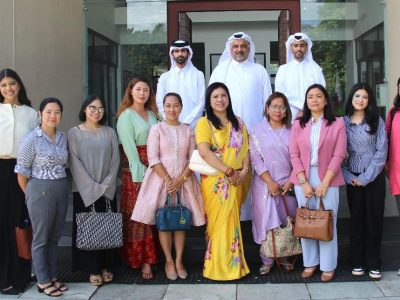Environmental Sustainability : A Key for a Sustainable Future

Environmental sustainability is the cornerstone of the quest for a truly sustainable future. In a world where human activities profoundly impact the natural environment, fostering harmony between society, the economy, and ecology is paramount. Environmental sustainability encapsulates the notion of responsibly managing natural resources, minimizing pollution and waste, and preserving biodiversity for the present and future generations.
Environmental sustainability acknowledges the finite nature of Earth’s resources and recognizes the interconnectedness of all living organisms within ecosystems. It calls for a shift away from exploitative and extractive practices towards those that prioritize conservation, regeneration, and equitable distribution of resources. By embracing sustainability principles, we strive to meet the needs of the present without compromising the ability of future generations to meet their needs.
Central concept of environmental sustainability is the recognition of nature’s inherent value beyond its instrumental value to humans. Ecosystems provide essential services, such as clean air, fresh water, fertile soil, and climate regulation, which are vital for human well-being and survival. Preserving and restoring natural habitats not only safeguards biodiversity but also enhances resilience to environmental changes and mitigates the impacts of climate change.
Achieving environmental sustainability requires concerted efforts across multiple fronts. This entails adopting holistic approaches to land use planning, resource management, and pollution control that consider the long-term consequences of human activities on ecosystems and biodiversity. Embracing renewable energy sources, promoting energy efficiency, and transitioning to circular economy models are essential steps towards reducing ecological footprints and mitigating climate change.
Environmental sustainability requires fostering a culture of environmental stewardship and collective responsibility. Empowering individuals, communities, businesses, and governments to make informed decisions and take meaningful actions towards sustainability is crucial. Education, public awareness campaigns, and stakeholder engagement play pivotal roles in catalyzing behavioral change and fostering a sense of environmental citizenship.
Environmental sustainability serves as a guiding principle for building a sustainable future that respects planetary boundaries, safeguards natural ecosystems, and ensures the well-being of all forms of life. By embracing the principles of environmental sustainability, we can pave the way for a more resilient, equitable, and harmonious world for the present and future generations to thrive.
Key points of environmental sustainability
Environmental sustainability refers to the responsible use and management of natural resources to meet present needs, without compromising the ability of future generations to meet their own needs. This involves minimizing environmental degradation, conserving biodiversity, and reducing pollution and waste. Through sustainable practices such as renewable energy adoption, ecosystem restoration, and sustainable agriculture, environmental sustainability aims to maintain ecological balance, support human well-being, and preserve the integrity of the planet for future generations. I think the following are key points to consider for environmental sustainability:
Resource Management: Efficiently using natural resources while minimizing waste and depletion. Resource management encompasses the strategic and responsible utilization of natural resources to meet present needs while safeguarding their availability for future generations. It involves maximizing the efficiency of resource extraction, consumption, and disposal processes while minimizing waste and depletion. Effective resource management is essential to achieve environmental sustainability and ensure the continued availability of natural resources for future generations. By prioritizing efficiency, conservation, and collaboration, stakeholders can minimize waste and depletion, while maximizing the benefits derived from Earth’s finite resources.
Biodiversity Preservation: Protecting and conserving a variety of life forms and ecosystems on Earth. Preservation of biodiversity entails safeguarding the rich array of life forms and ecosystems that inhabit our planet. It involves the protection and conservation of diverse species, habitats, and processes to maintain ecological balance and resilience. By preserving biodiversity, we ensured the continued provision of ecosystem services such as clean air, water, and fertile soil, which are essential for human well-being and survival. Conservation efforts may include establishing protected areas, implementing habitat restoration projects, combating invasive species, and promoting sustainable land- and resource-management practices. Preservation of biodiversity is crucial not only for maintaining the health of natural ecosystems but also for supporting food security, mitigating climate change impacts, and fostering cultural and spiritual connections to the natural world. By valuing and protecting biodiversity, we can secure a sustainable future for ourselves and future generations.
Pollution Reduction: Minimizing pollution and waste generation to prevent harm to the environment and human health. Pollution reduction is of paramount importance for mitigating environmental degradation and safeguarding human health. This involves minimizing the release of harmful pollutants and waste into the air, water, and soil. By adopting pollution prevention measures and implementing cleaner production techniques, industries can reduce the emissions and waste generation at the source. Similarly, individuals can contribute to pollution reduction through simple actions, such as proper waste disposal, conserving energy, and using eco-friendly transportation. Additionally, governments play a critical role in enforcing regulations, implementing pollution control measures, and investing in sustainable infrastructure and technology. Pollution reduction efforts not only protect ecosystems and wildlife but also mitigate the adverse health effects associated with pollution exposure, such as respiratory illnesses and waterborne diseases. By prioritizing pollution reduction, we can create cleaner and healthier environments for current and future generations to thrive.
Climate Mitigation: Taking actions to reduce greenhouse gas emissions and combat climate change. Climate mitigation involves the implementation of strategies and initiatives to reduce greenhouse gas emissions and alleviate the impacts of climate change. This includes transitioning to renewable energy sources, improving energy efficiency, and promoting sustainable land use practices. By reducing emissions from sectors such as transportation, industry, and agriculture, global warming can be mitigated and the severity of climate-related disasters can be limited. Climate mitigation efforts also involve enhancing carbon sequestration through afforestation, reforestation, and sustainable forest management. Additionally, investing in climate-resilient infrastructure and technologies can help communities adapt to changing climate conditions and minimize their vulnerability to extreme weather events. Climate mitigation is essential to safeguard ecosystems, biodiversity, and human well-being. By implementing proactive measures to reduce emissions and combat climate change, we can create a more sustainable and resilient future for generations.
Renewable Energy Adoption: Transitioning to sustainable energy sources such as solar, wind, and hydroelectric power. Renewable energy adoption involves transitioning from fossil fuels to sustainable energy sources, such as solar, wind, and hydroelectric power. Harnessing natural resources that are abundant, clean, and renewable can reduce greenhouse gas emissions and mitigate climate change. Investing in renewable energy infrastructure not only promotes energy independence and security but also creates green jobs and stimulates economic growth. Embracing renewable energy technologies is essential for achieving a sustainable energy future and reducing reliance on finite and polluting fossil fuels.
Circular Economy: Implementing systems that prioritize recycling, reuse, and repurposing materials to minimize resource consumption and waste generation. Circular economy strategies prioritize recycling, reuse, and repurposing of materials to minimize resource consumption and waste generation. By closing the loop on material flows, we can reduce reliance on finite resources and mitigate environmental degradation. The implementation of circular economy principles promotes resource efficiency, reduces pollution, and fosters economic resilience. Businesses and industries can adopt practices, such as product redesign, waste-to-energy conversion, and closed-loop supply chains, to maximize resource recovery and minimize environmental impact. Embracing a circular economy mindset is essential to creating a more sustainable and regenerative approach to production and consumption.
Ecosystem restoration: rehabilitation of degraded ecosystems and habitats to enhance biodiversity and ecosystem services. Ecosystem restoration involves revitalizing degraded ecosystems and habitats to enhance biodiversity and ecosystem services. Through measures such as reforestation, wetland restoration, and habitat conservation, we can mitigate environmental damage and promote ecosystem recovery, benefiting both wildlife and human communities.
Sustainable Agriculture: Practicing farming methods that promote soil health, biodiversity, and long-term food security. Sustainable agriculture emphasizes farming methods that prioritize soil health, biodiversity, and long-term food security. Techniques such as crop rotation, organic farming, and agroforestry promote environmental stewardship while ensuring the resilience and productivity of agricultural systems for future generations.
Conservation: Protecting natural areas, wildlife habitats, and endangered species to maintain ecosystem health and resilience. Conservation entails safeguarding natural areas, wildlife habitats, and endangered species to maintain ecosystem health and resilience. Conservation efforts aim to preserve biodiversity, support ecosystem services, and ensure the long-term sustainability of ecosystems through measures such as habitat protection, species conservation, and sustainable land management.
Education and Awareness: Promoting environmental literacy and fostering a culture of stewardship and sustainability among individuals, communities, and institutions. Education and awareness initiatives aim to promote environmental literacy and cultivate a culture of stewardship and sustainability among individuals, communities, and institutions. By providing information, resources, and opportunities for engagement, these efforts empower people to make informed decisions and take meaningful actions to protect the environment. Through education and awareness-raising campaigns, we can inspire a collective commitment to sustainability and foster positive environmental behaviors and attitudes across society.
How does environmental sustainability serve as a key to a sustainable future?
Environmental sustainability is fundamental to a sustainable future, as it ensures the responsible management of natural resources, preservation of biodiversity, and mitigation of pollution and climate change. By prioritizing sustainability, we can create a resilient and harmonious world that meets the needs of the current and future generations.
Long-Term Resource Management: Environmental sustainability involves managing natural resources to ensure that they are available for future generations.
Resilience to Environmental Challenges: By preserving biodiversity and ecosystems, Environmental sustainability helps communities adapt to and mitigate the impacts of environmental changes such as climate change and habitat loss.
Health and Well-being: A sustainable environment supports human health and well-being by providing clean air, water, and food and reducing exposure to pollutants and environmental hazards.
Economic Stability: Environmental sustainability contributes to economic stability by promoting resource efficiency, reducing waste, and fostering innovation in green technologies and industries.
Social Equity: Sustainable environmental practices promote social equity by ensuring that all people, regardless of socioeconomic status, have access to clean air, water, and other resources necessary for a good quality of life.
Global Cooperation: Addressing environmental challenges requires global cooperation and collaboration. Environmental sustainability fosters international partnerships and agreements aimed at protecting the planet and its resources for future generation.
Environmental Sustainability: How the General Public Can Make a Difference
As members of the general public, numerous actions can be taken to foster environmental sustainability and contribute to a more sustainable future. Here are some key ways:
Reduce, Reuse, Recycle: Embracing the mantra of “reduce, reuse, recycle” can significantly reduce our ecological footprint. By minimizing waste generation, reusing items whenever possible, and recycling materials such as paper, plastics, and glass, we can conserve resources and reduce the burden on landfills and natural ecosystems.
Conserving Energy: Conserving energy in daily life can have a significant impact on reducing greenhouse gas emissions and combating climate change. Simple actions such as turning off lights when not in use, using energy-efficient appliances, and reducing heating and cooling usage can lower the carbon footprint and promote energy sustainability.
Choose Sustainable Transportation: Opting for eco-friendly transportation options such as walking, biking, carpooling, or using public transit can help reduce the air pollution and greenhouse gas emissions associated with transportation. Additionally, investing in electric or hybrid vehicles can further reduce the carbon footprint and support the transition to sustainable transportation systems.
Support Sustainable Practices: As consumers, we have the power to support businesses and industries that prioritize environmental sustainability. Choosing products and services from companies that adhere to sustainable practices, such as using eco-friendly materials, minimizing packaging waste, and reducing emissions, can incentivize the broader adoption of sustainable business models.
Promote conservation and preservation: Involving conservation efforts and supporting initiatives to protect natural habitats, wildlife, and biodiversity can help preserve ecosystems and ensure their long-term viability. This can include volunteering with local environmental organizations, participating in community clean-up events, and advocating for the preservation of green spaces and wildlife habitats.
Practice Water Conservation: Conserving water is crucial for both environmental sustainability and ensuring access to clean water for future generations. Simple measures, such as fixing leaks, using water-efficient appliances and fixtures, and reducing water consumption in daily activities, such as showering and watering plants, can help conserve this precious resource.
Educate and Advocate: Educating ourselves and others about environmental issues and advocating policies and practices that promote sustainability are essential steps towards creating positive change. By raising awareness, engaging in public discourse, and supporting initiatives that prioritize environmental protection, we can influence decision makers and drive systemic change towards a more sustainable future.
Overall, we play a role in fostering environmental sustainability. By making conscious choices in our daily lives, supporting sustainable practices, and advocating for positive change, we can collectively work towards building a more resilient and environmentally sustainable world for future generations.
Facebook Comment
latest Video
Trending News
- This Week
- This Month

















